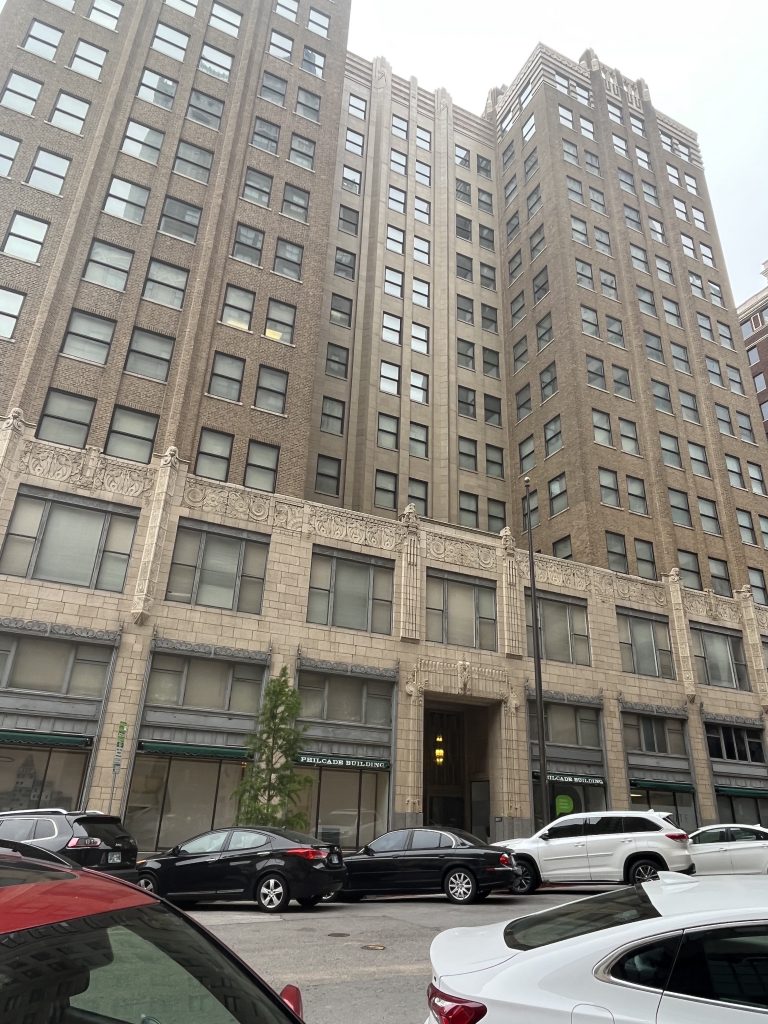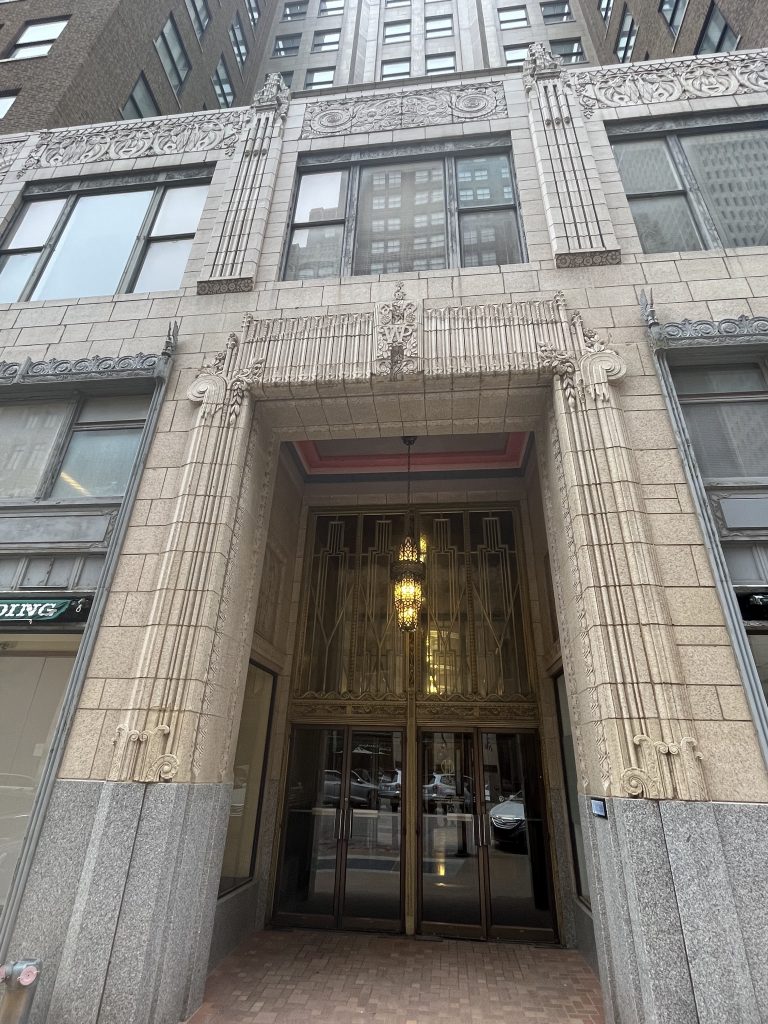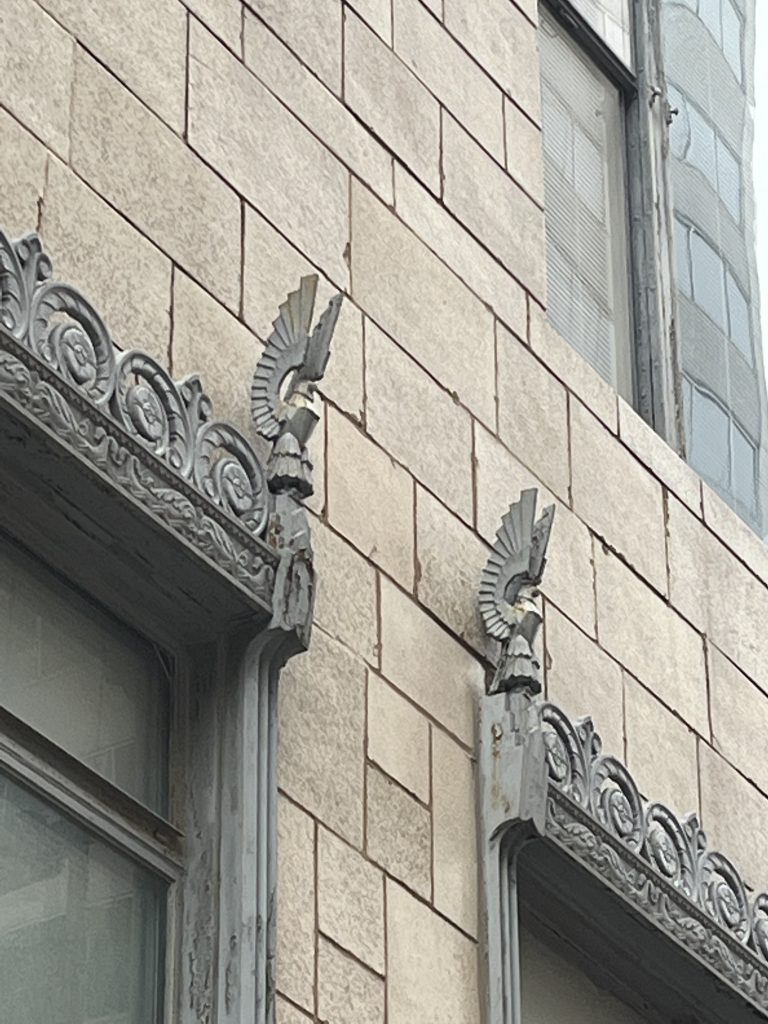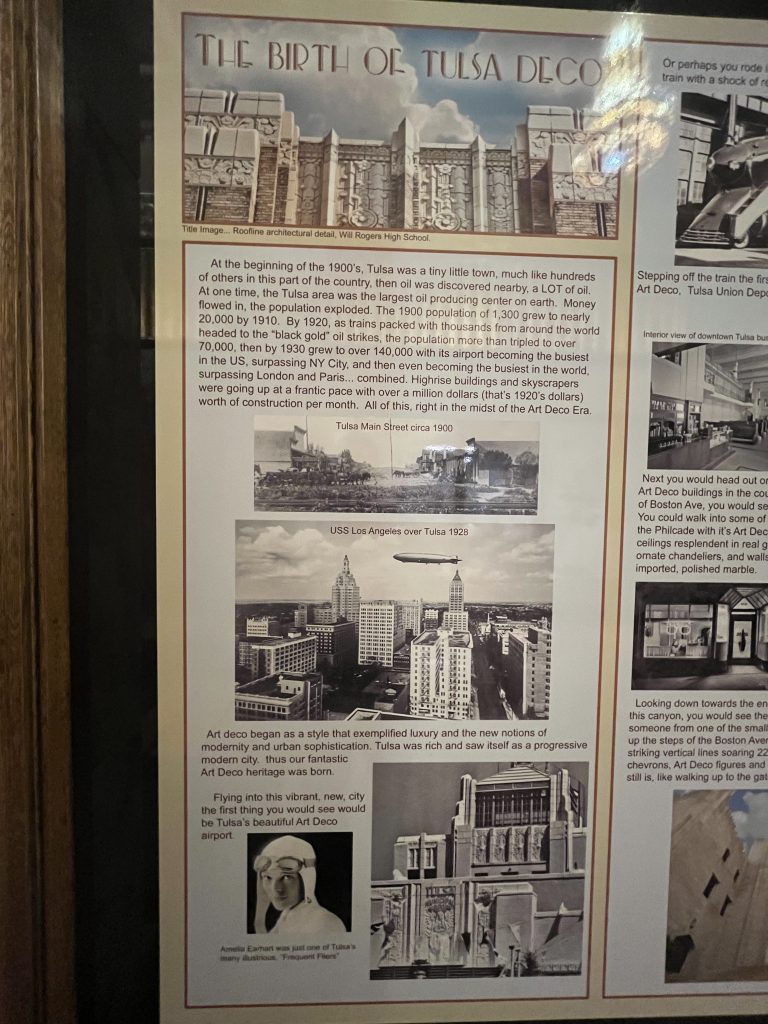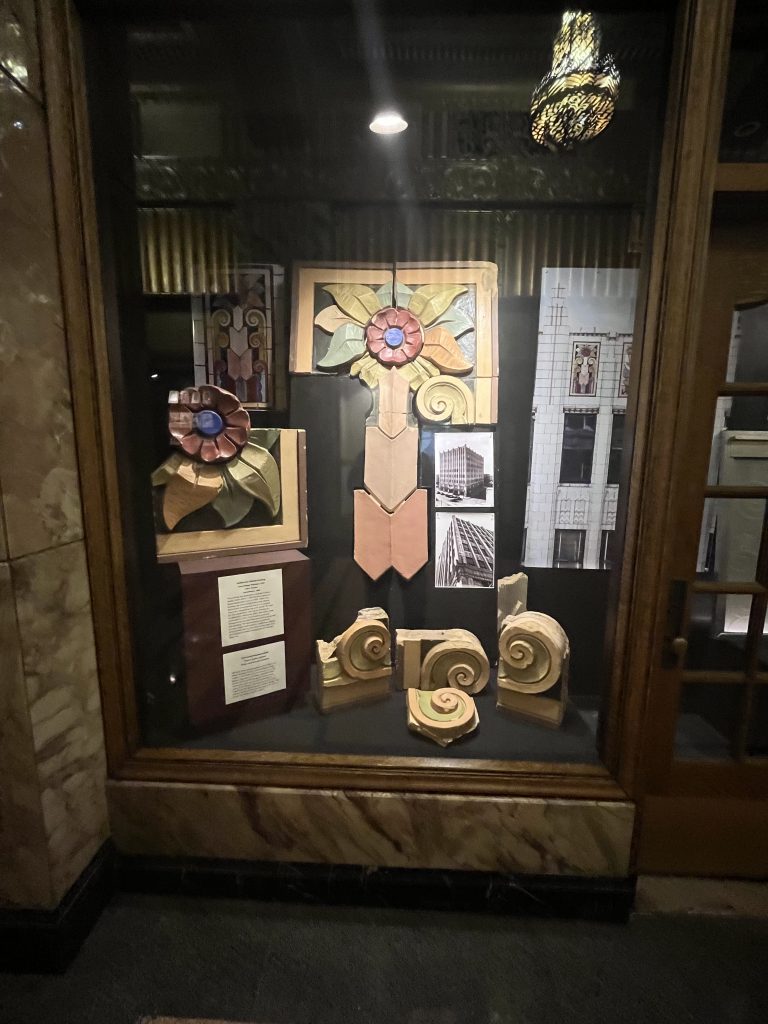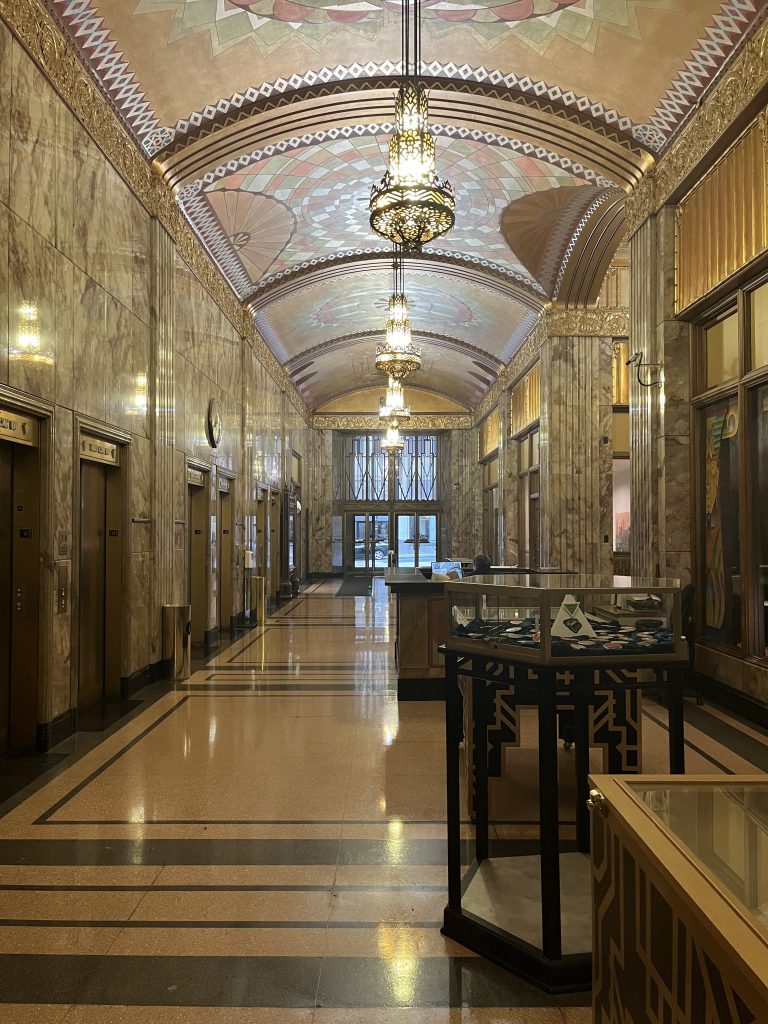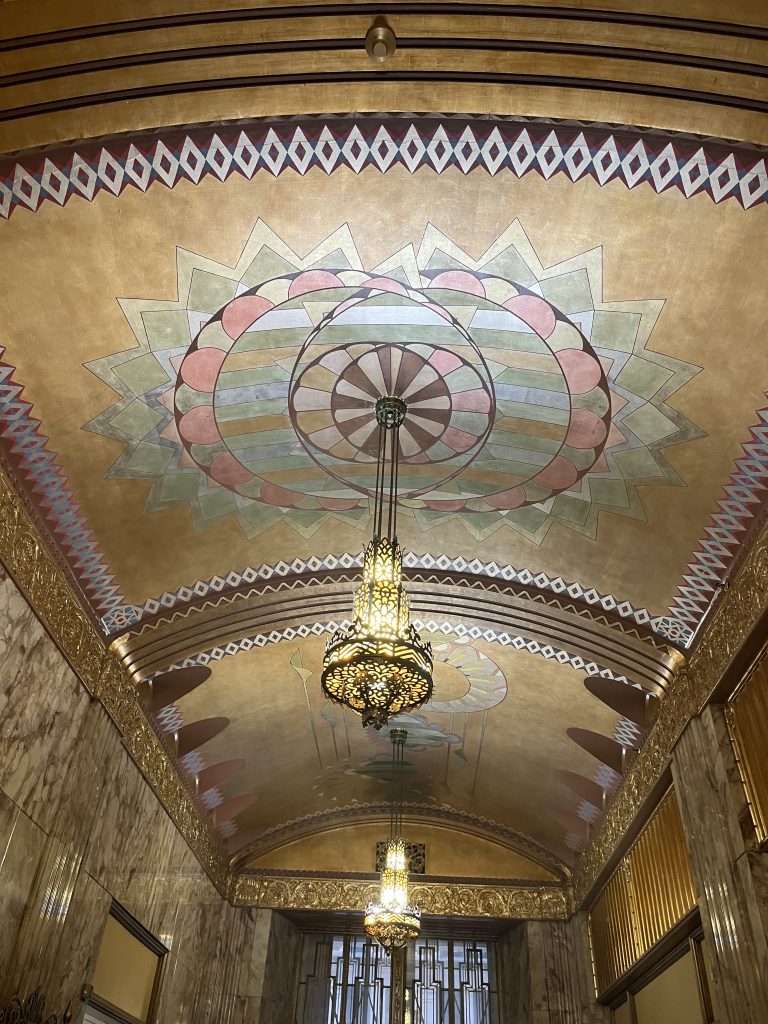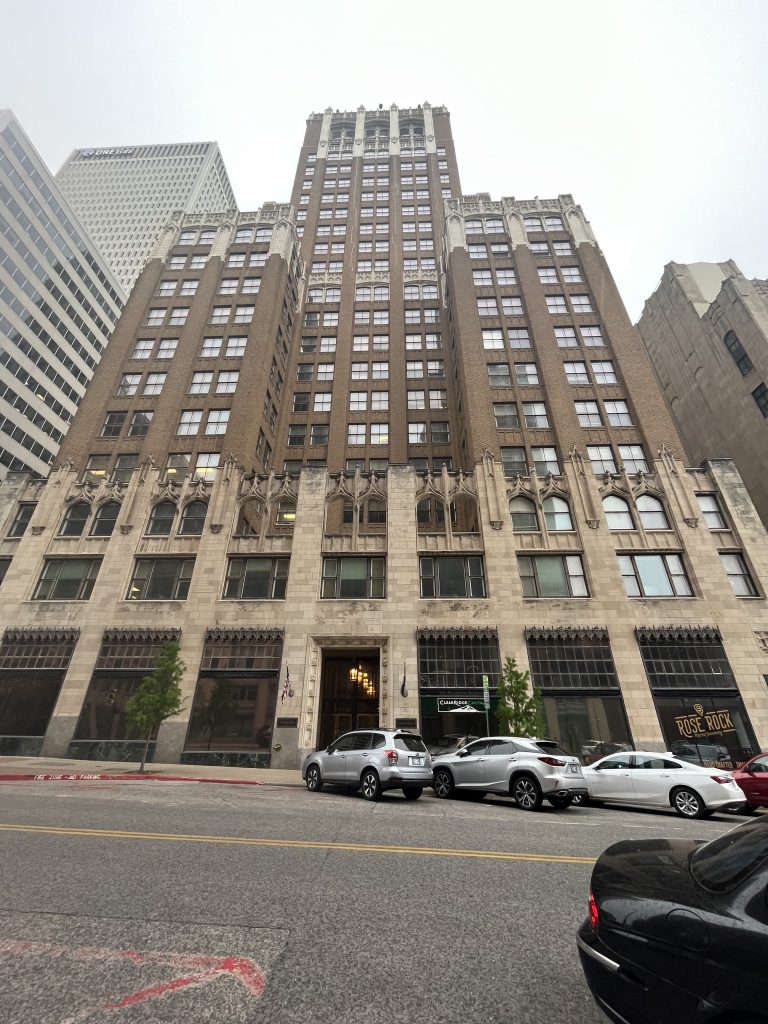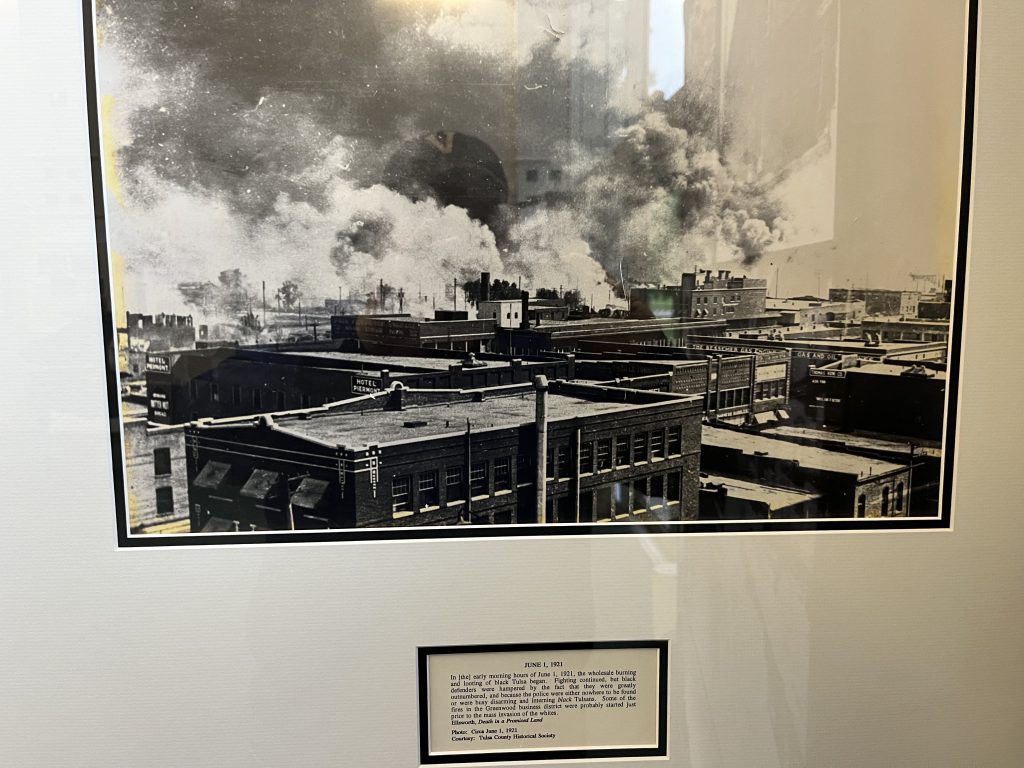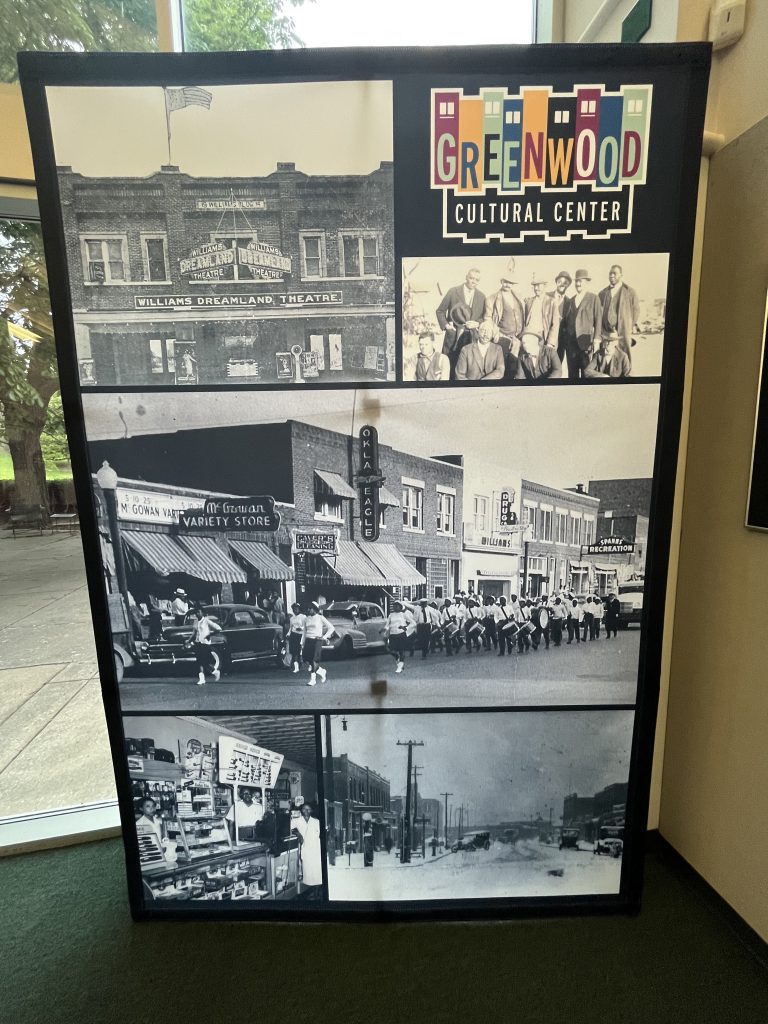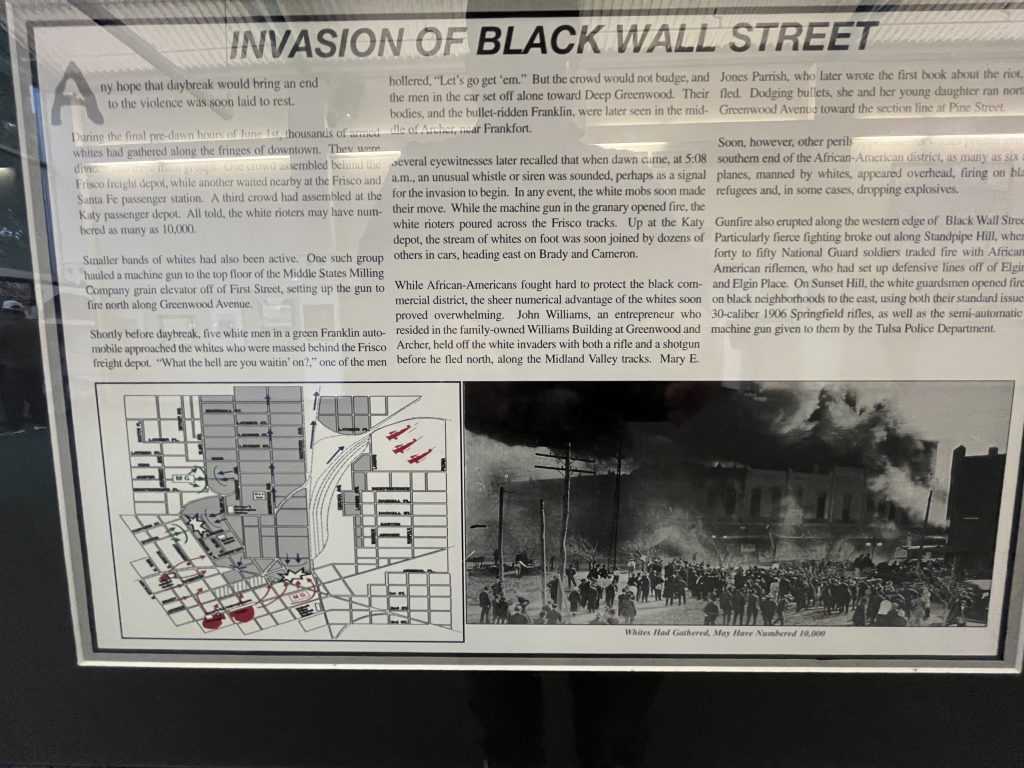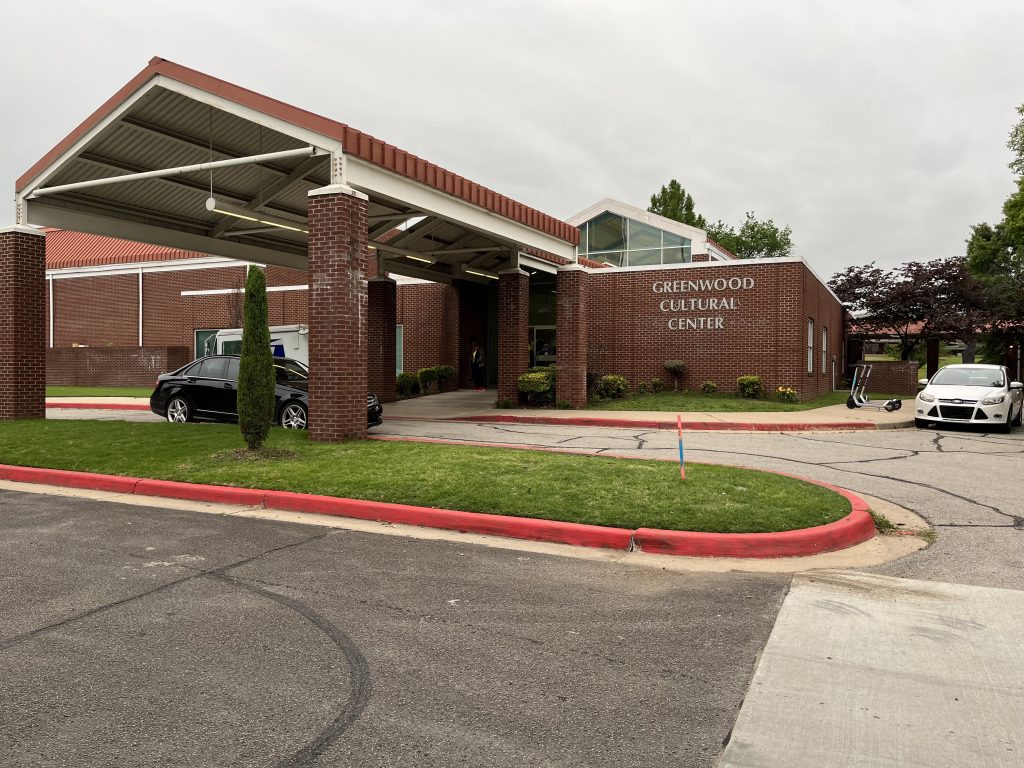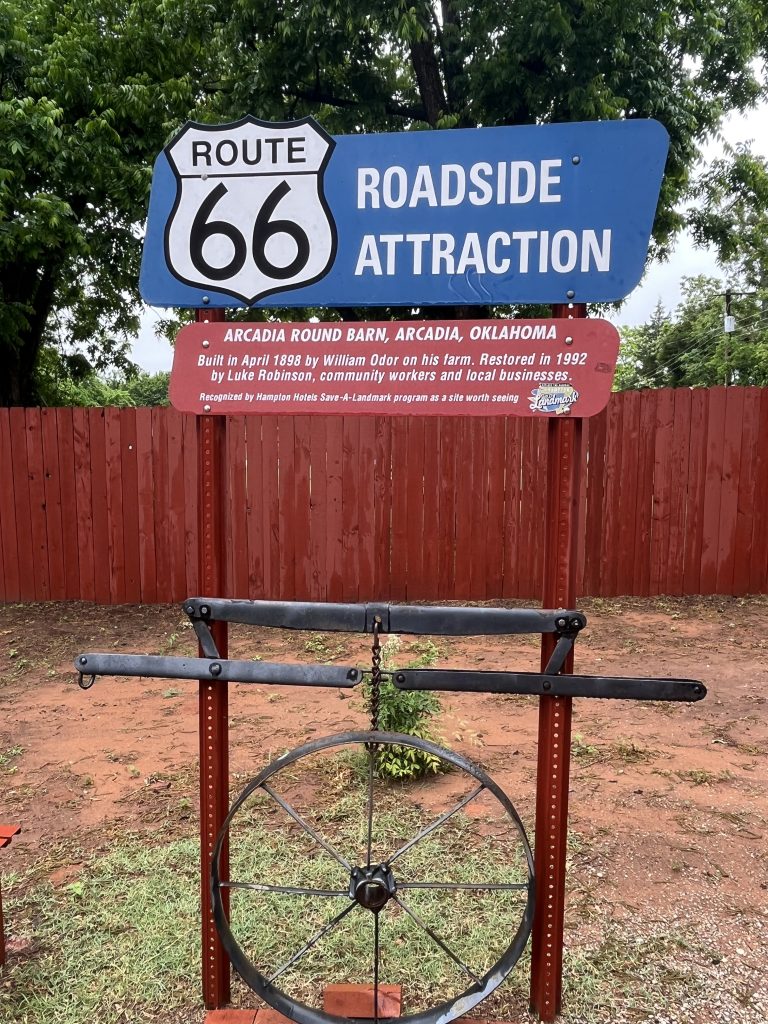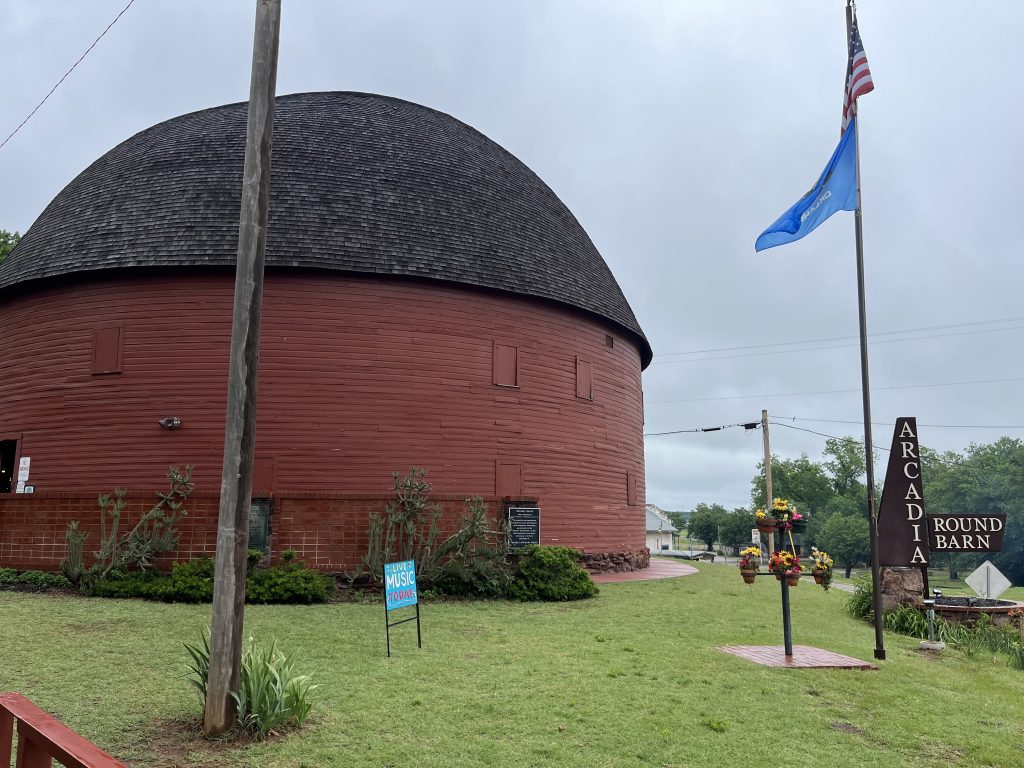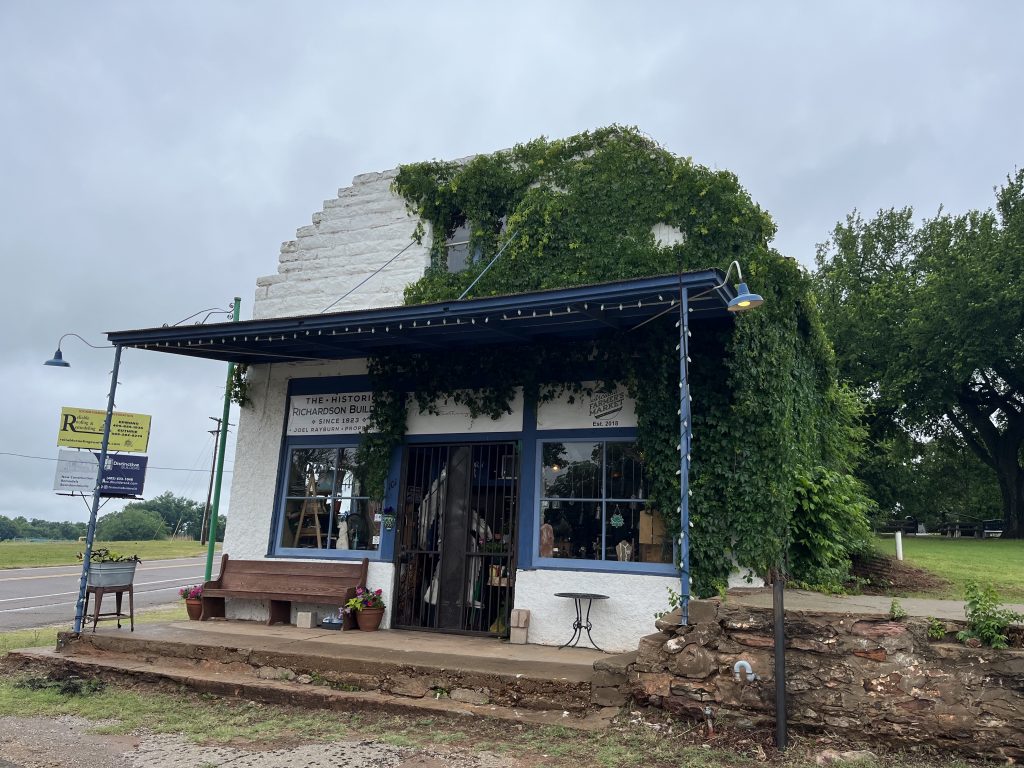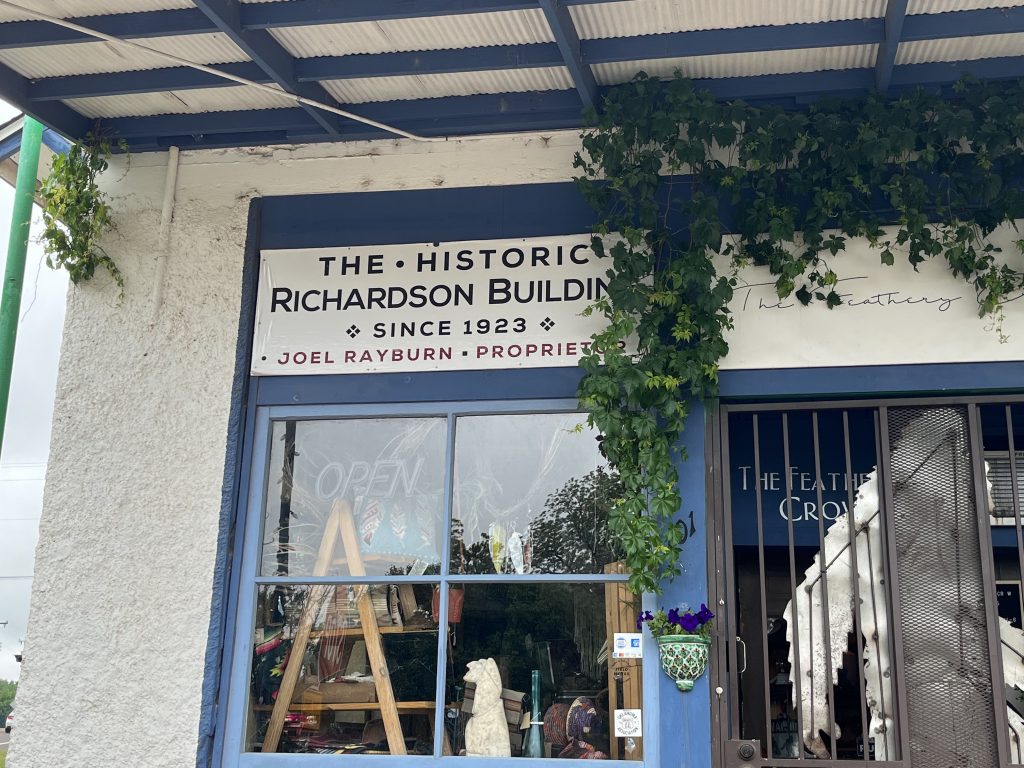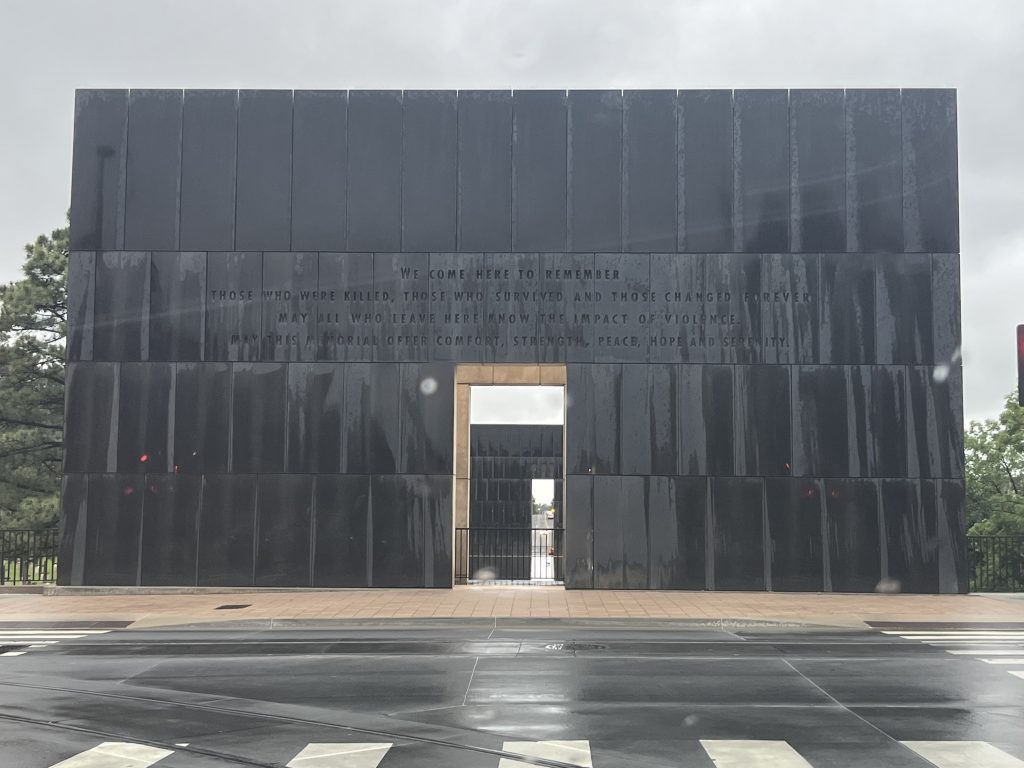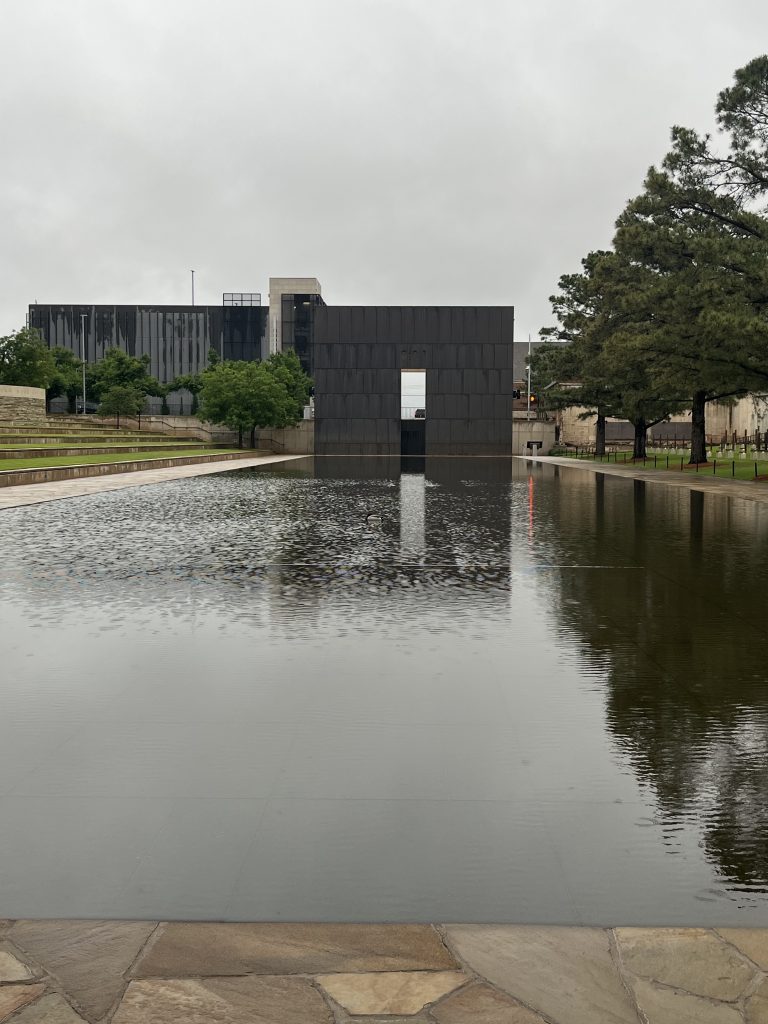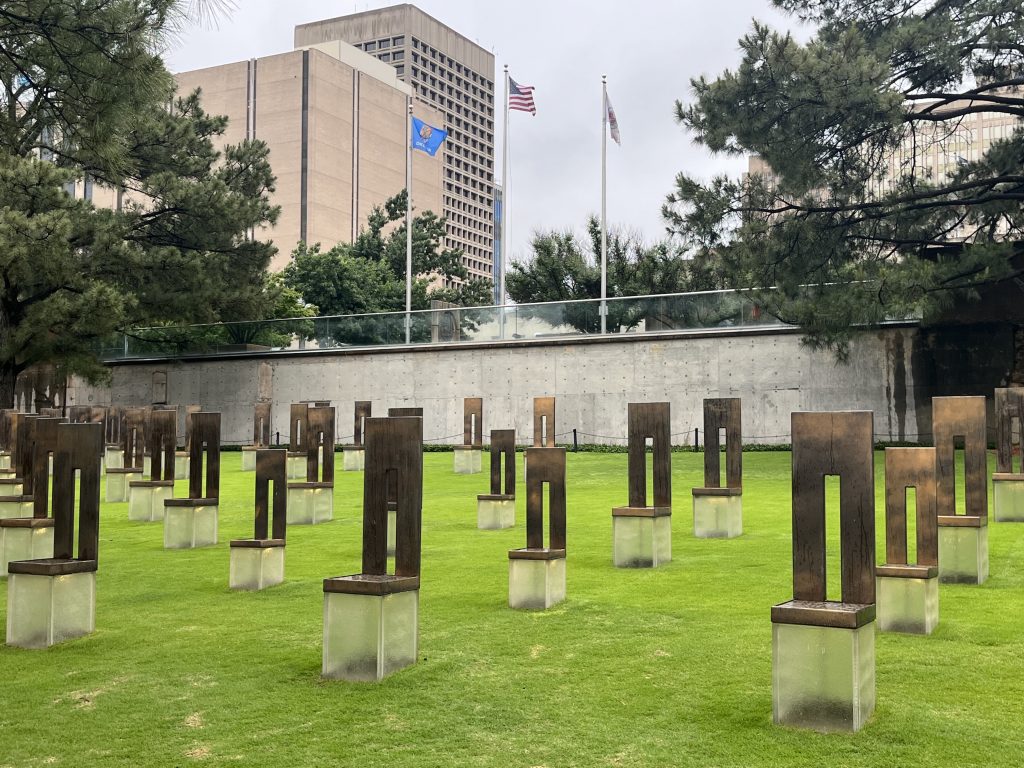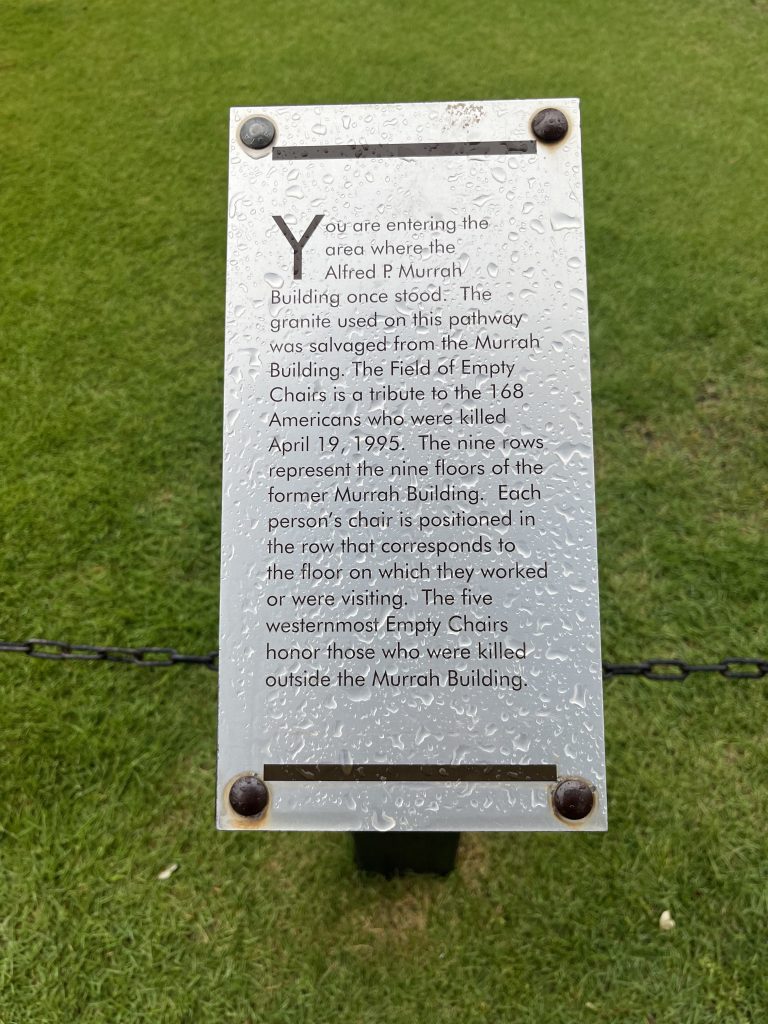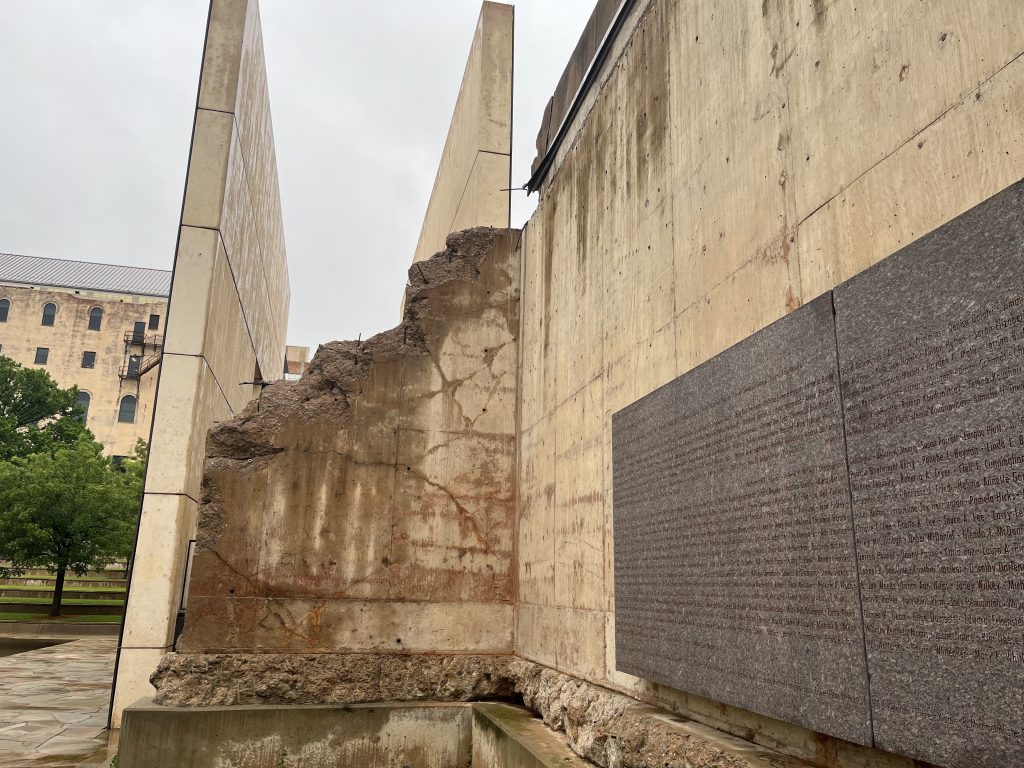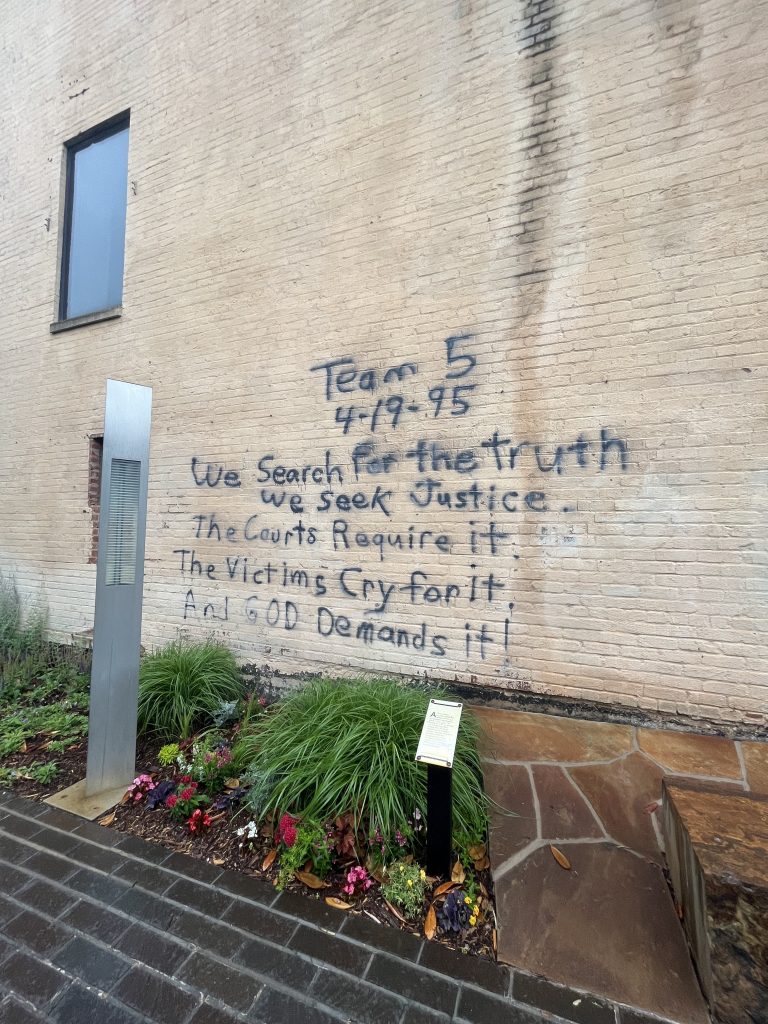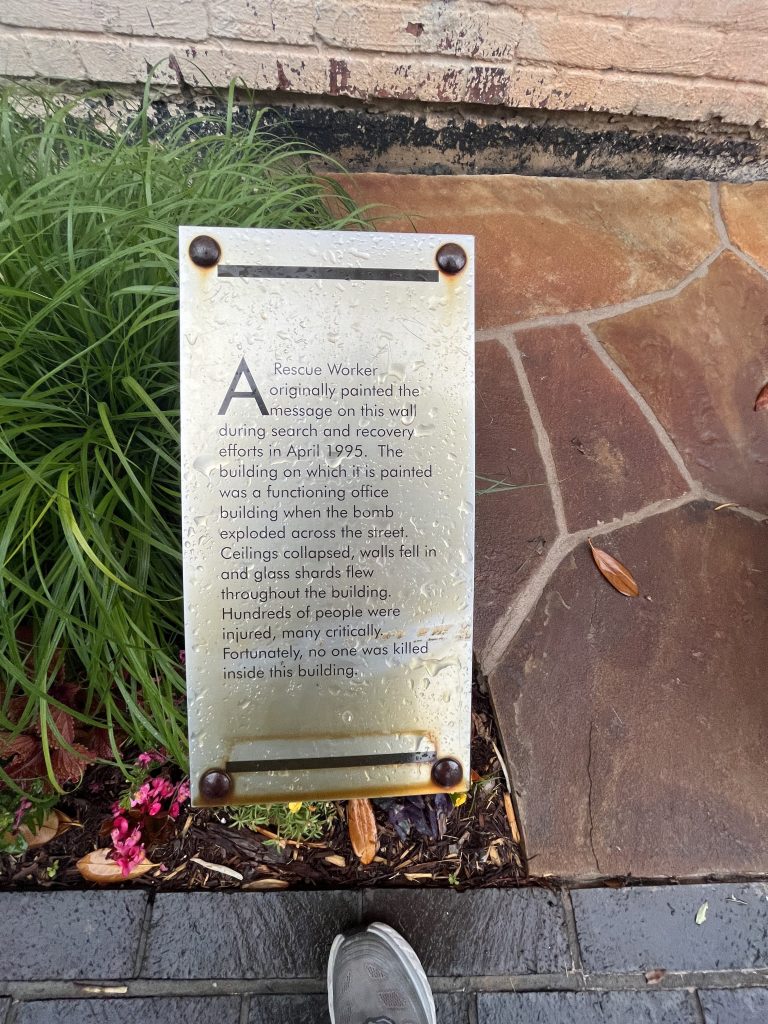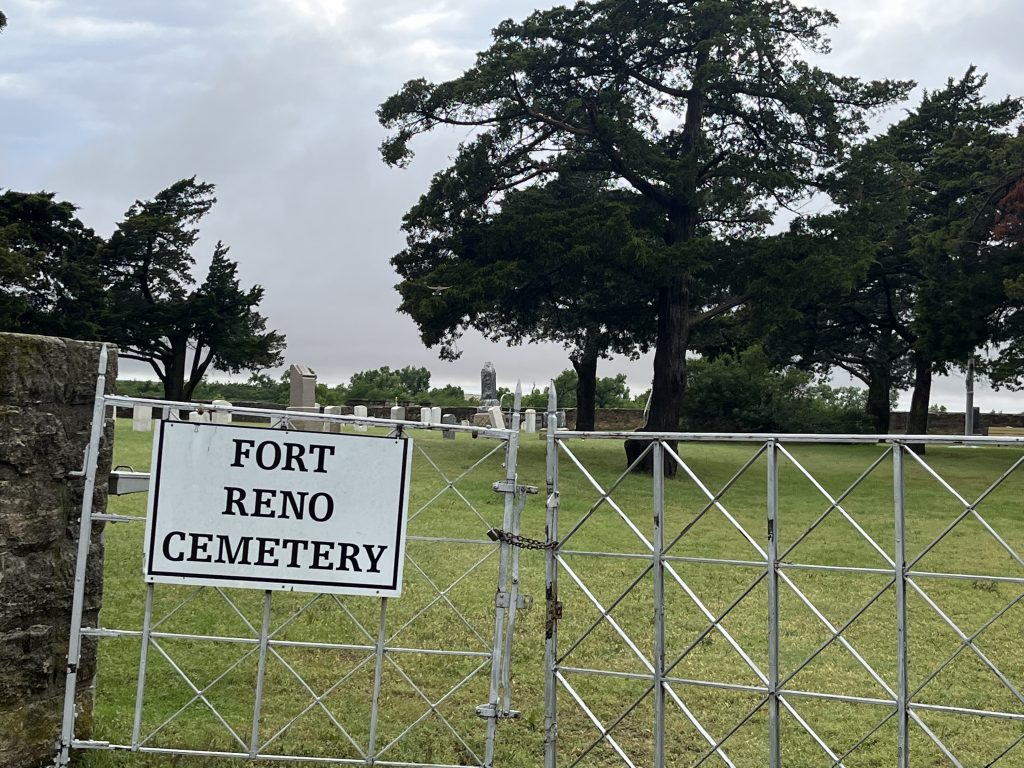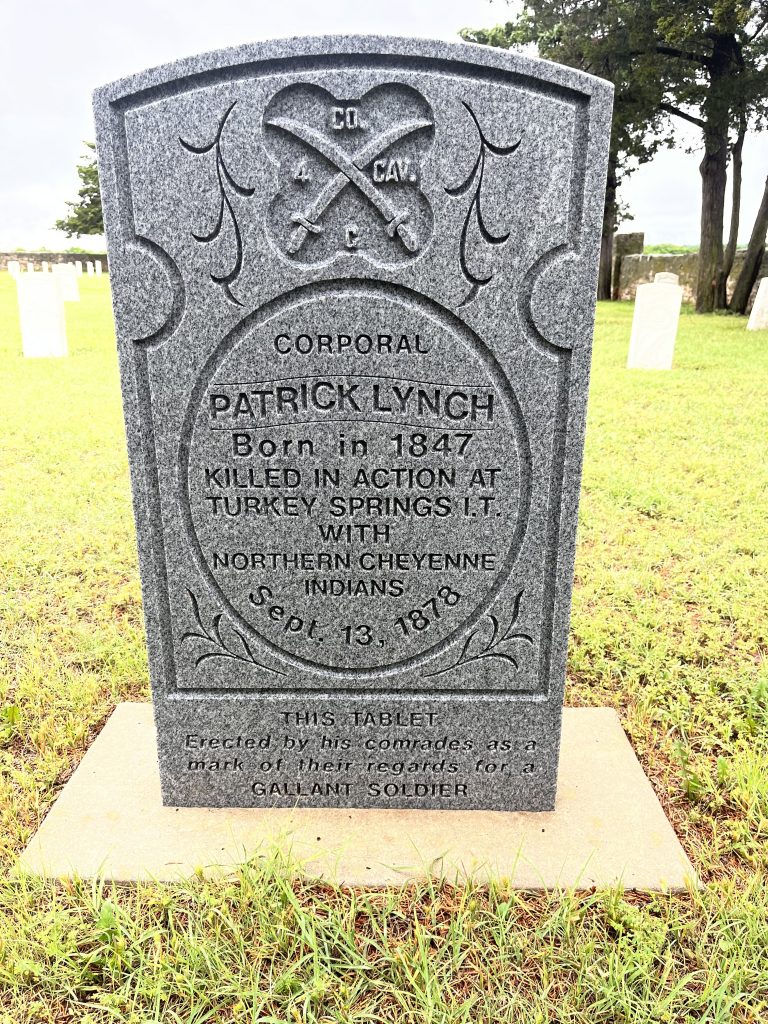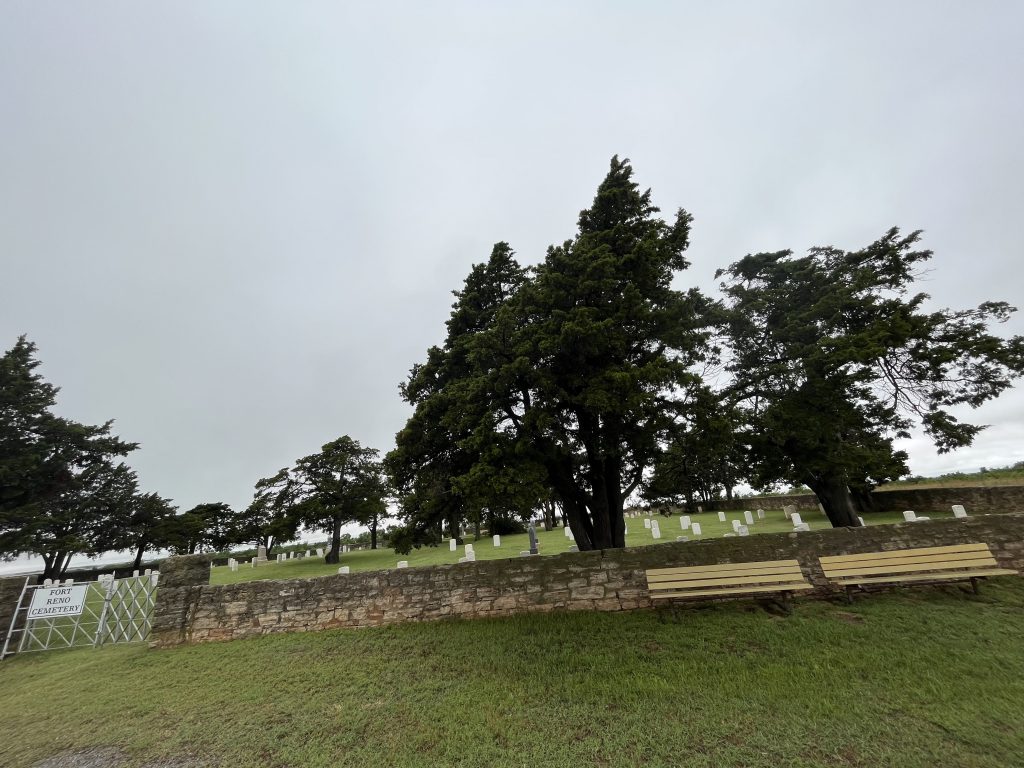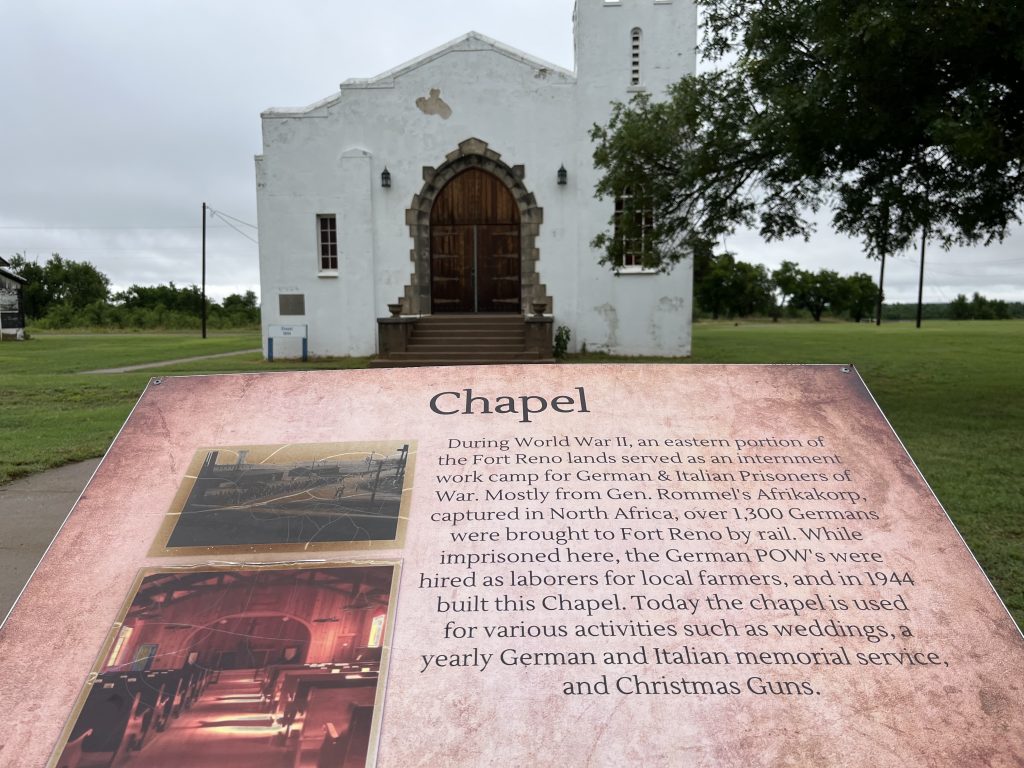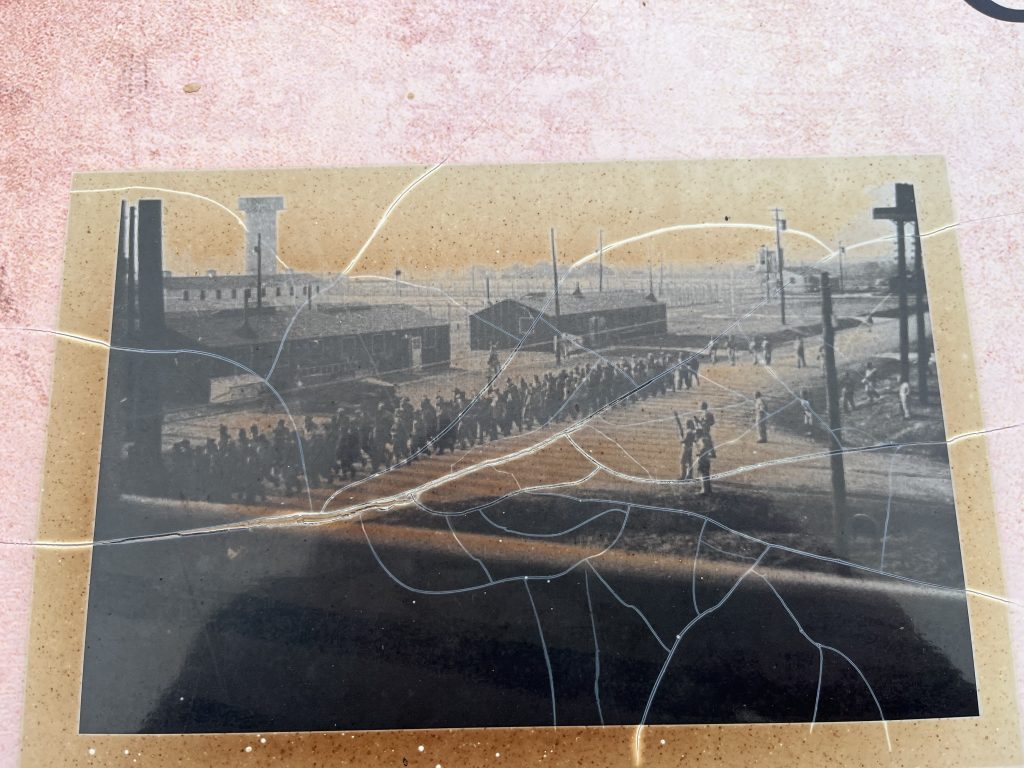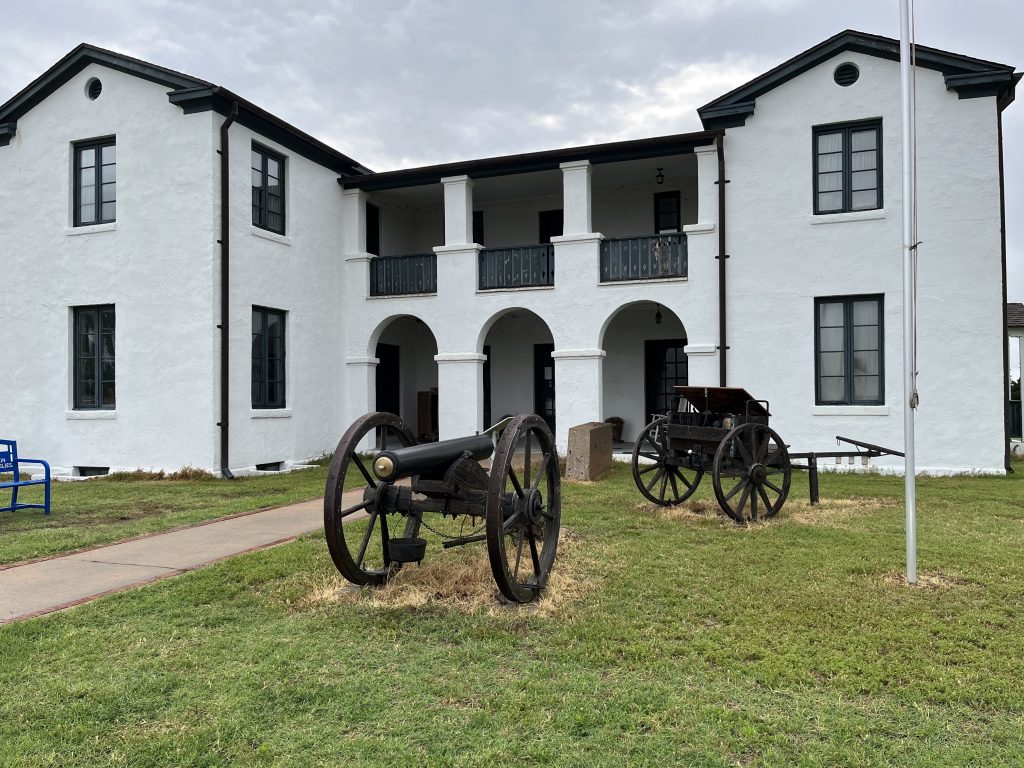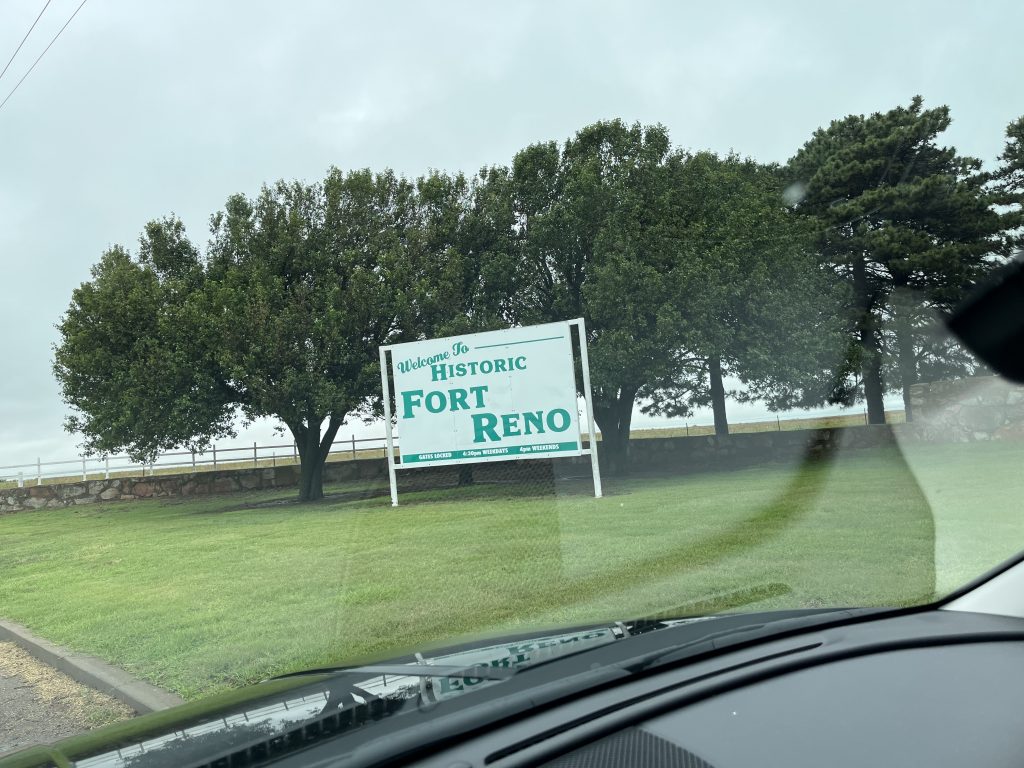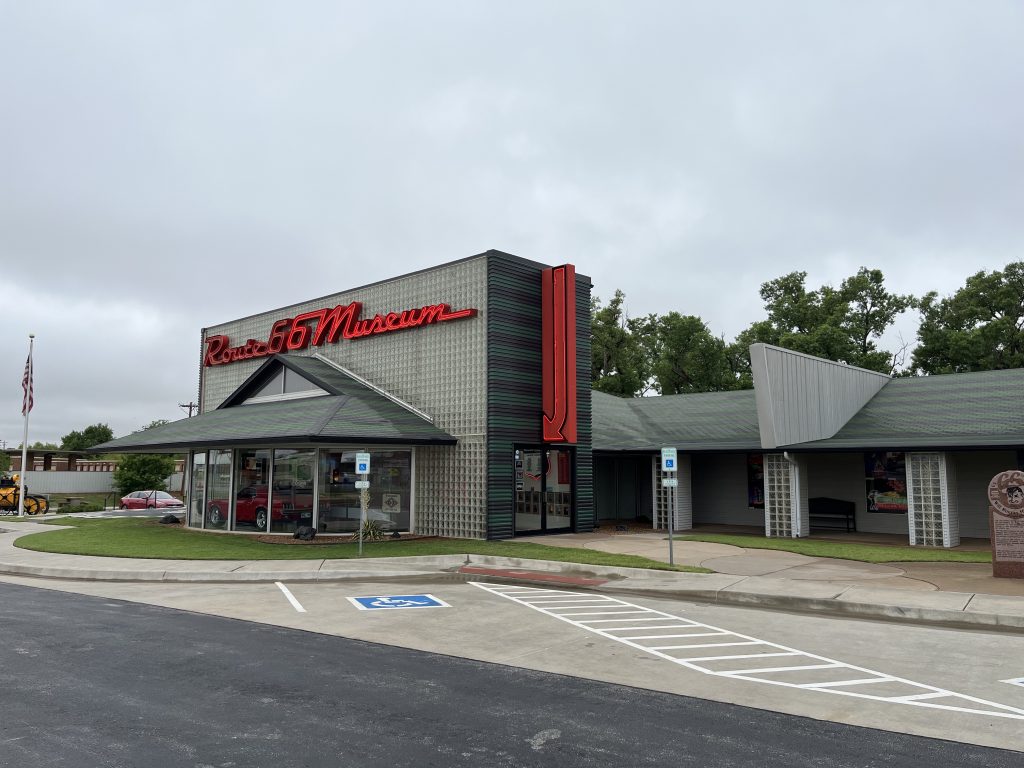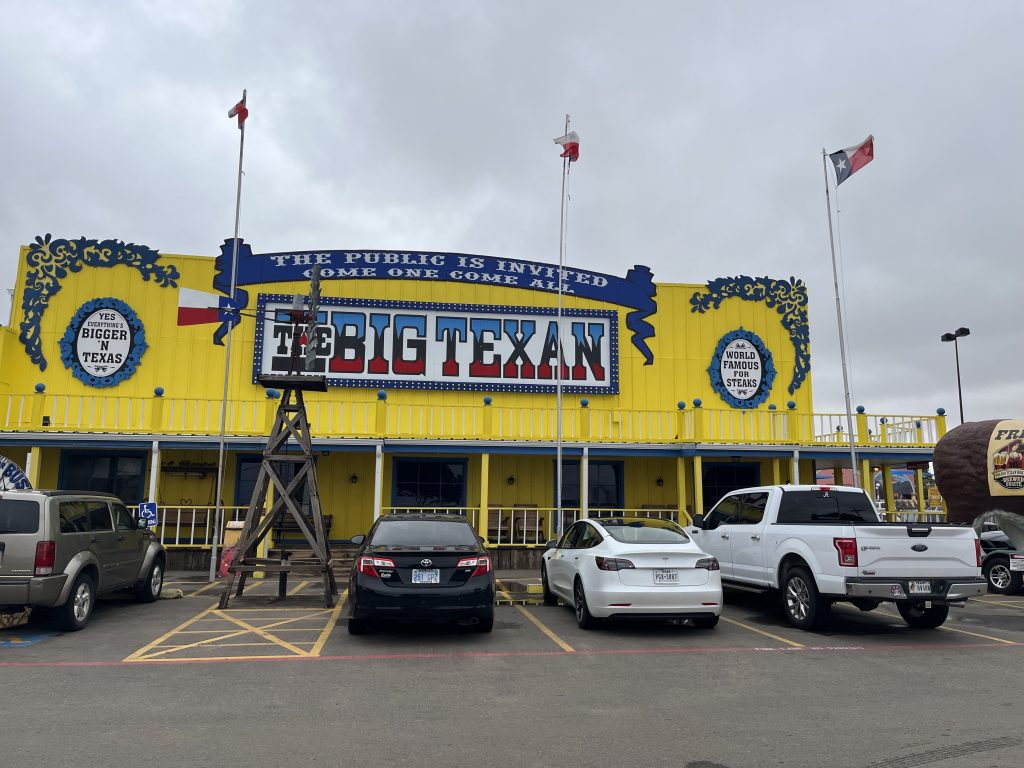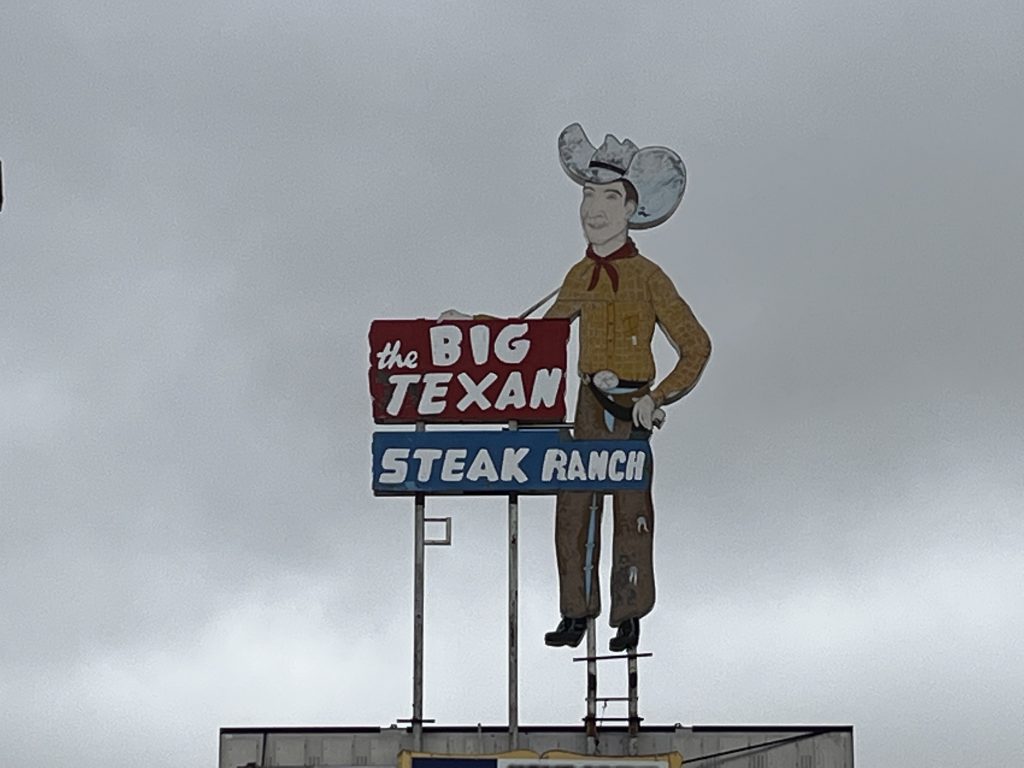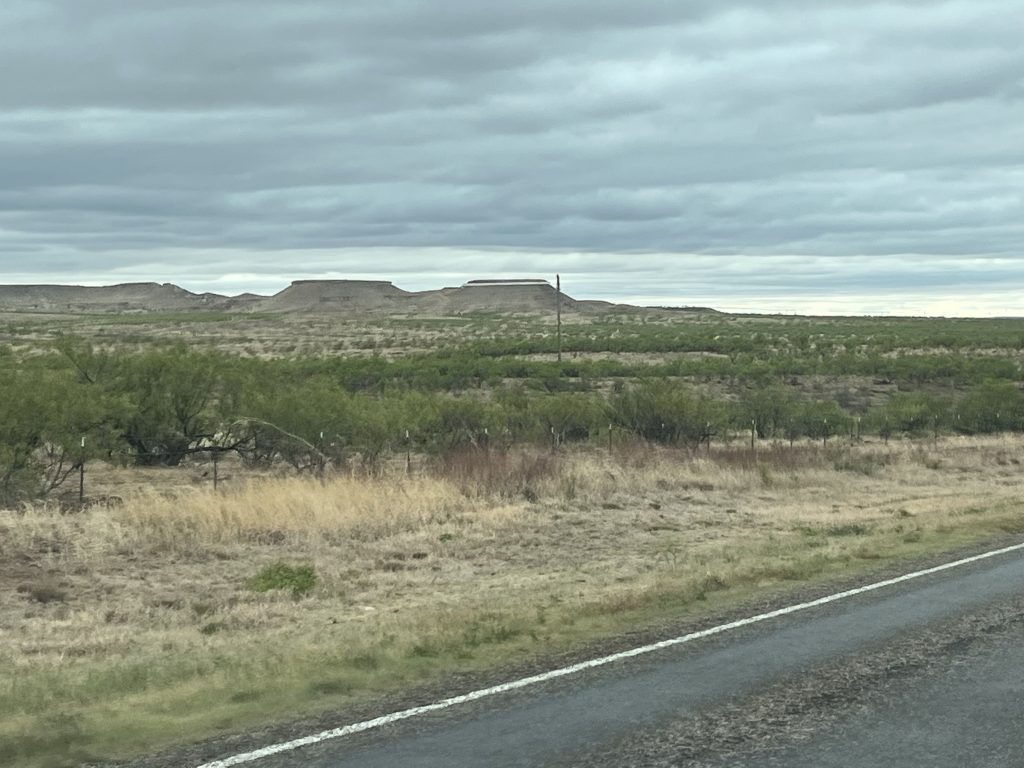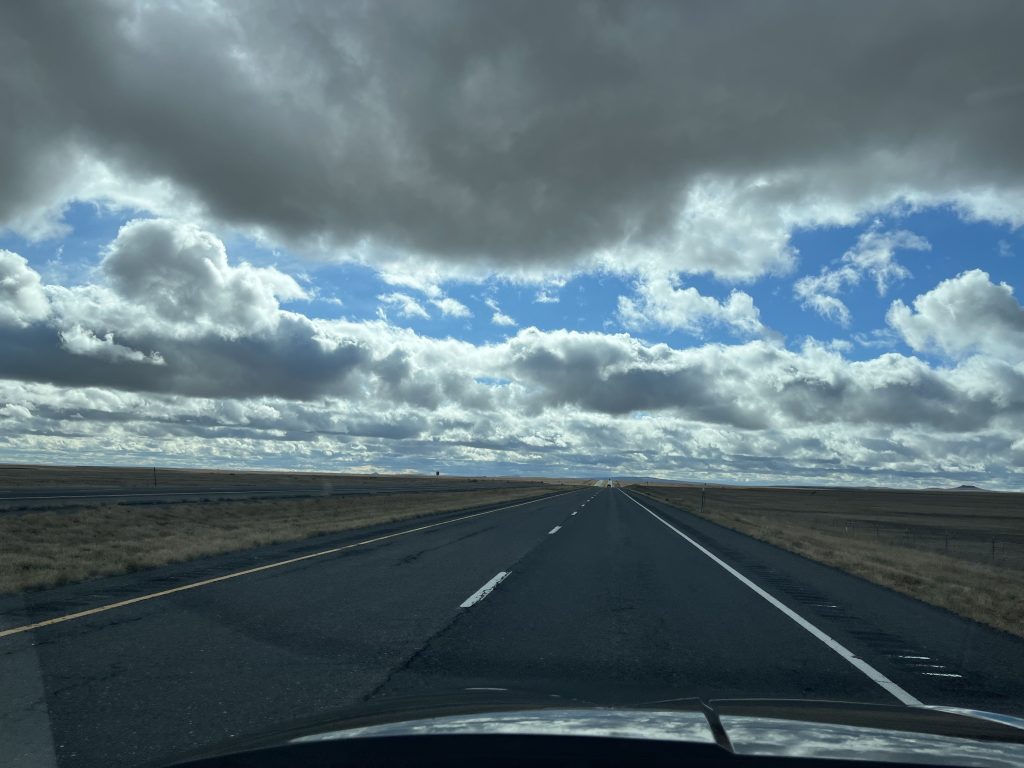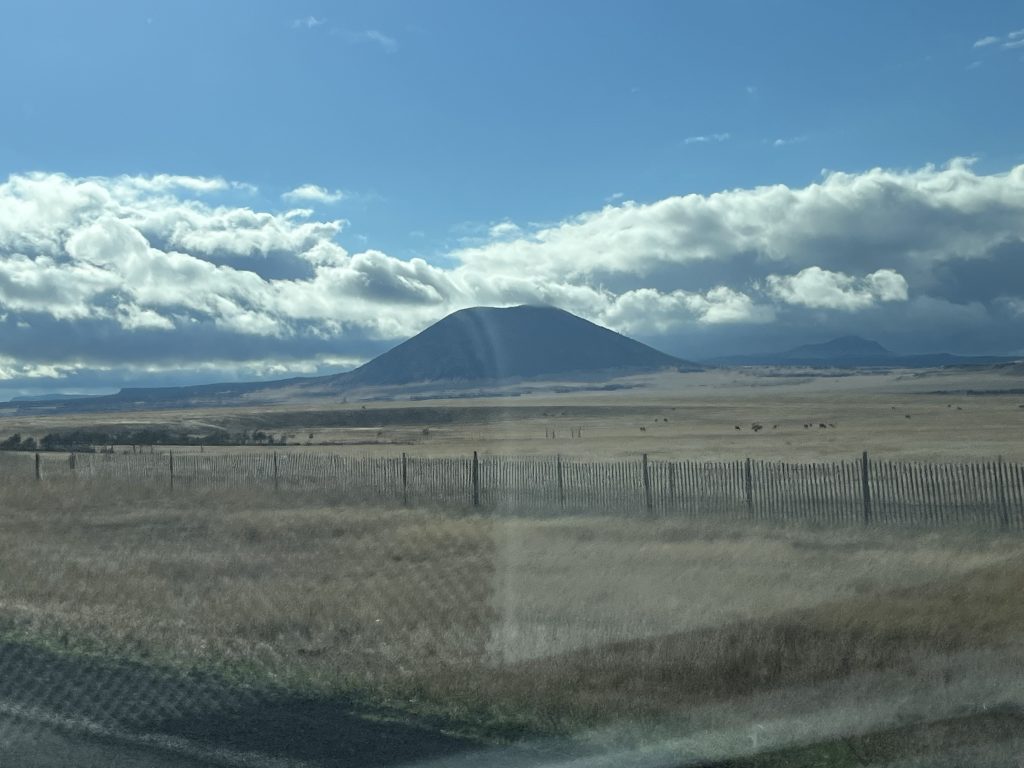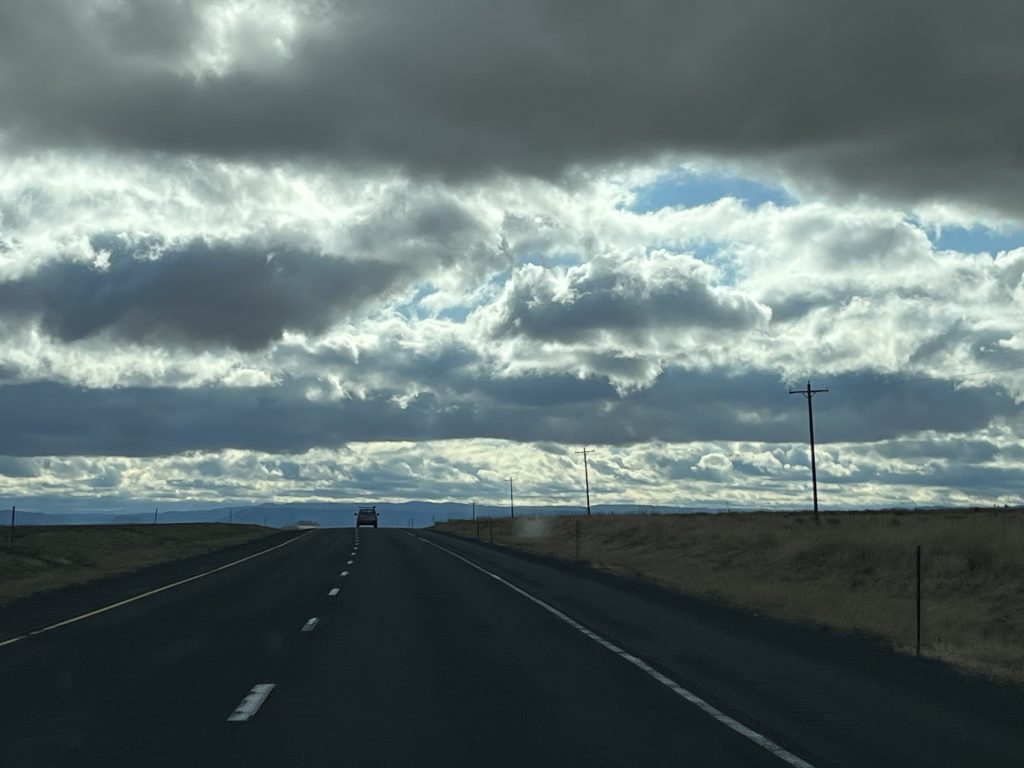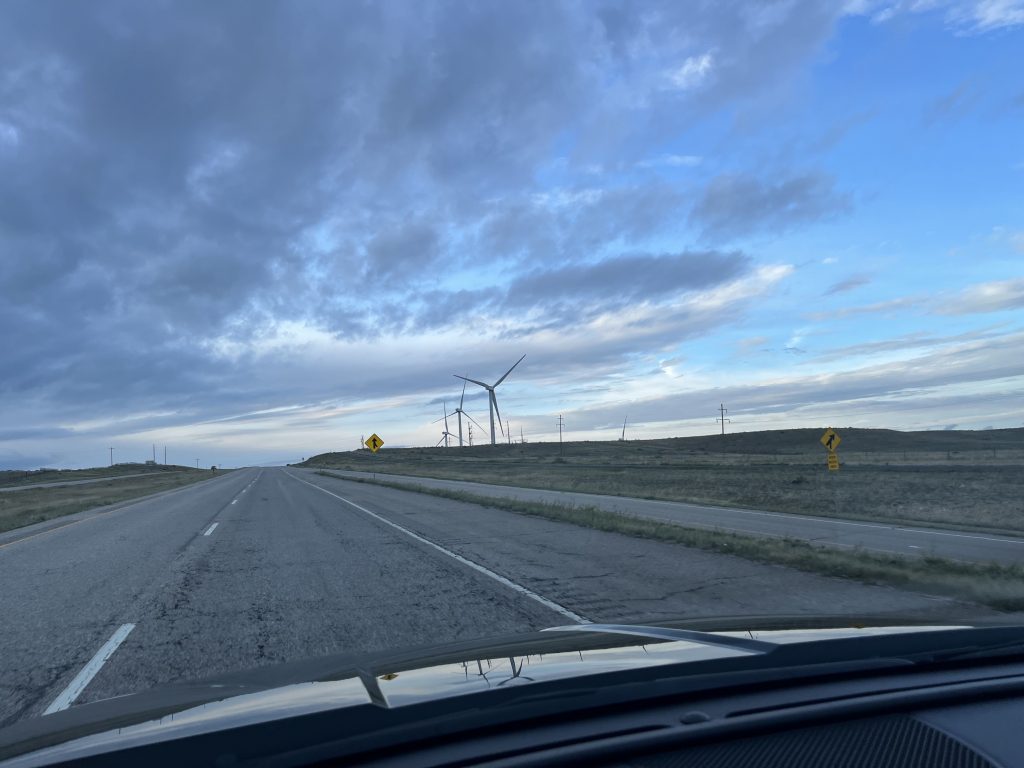Picture gallery at the bottom of the blog!
Eyes need opening. We live in a time when forces want us not to look critically at parts of our collective past, arguing that since we weren’t living during that period, we are not responsible for what happened. OK, on one level I get that. For many years, I was quick to say that during the “recent unpleasantries” (read Civil War) my people where still fighting for Queen and Country. But that argument doesn’t stand up against the reality that we who benefit most from our privileged position in society do so, in part, because of injustices perpetrated by the dominant culture in the past. Studying history forces us to open our eyes.
The last couple of days have been all about having my eyes opened. Monday morning started in Tulsa. My hotel was right across the street from the Philcade Building in the heart of Tulsa’s Art Deco district which boasts a collection of Art Deco artifacts from the city in a sumptuous period lobby. In the ‘20’s – ‘30’s Tulsa was the largest oil producing center in the world and “black gold” fueled the rapid building of skyscrapers right as Art Deco was the rage. Thus, the city has a wonderful collection of beautiful buildings right in the downtown. But, history, if our eyes are open, forces us to confront that some of that oil was stolen from native Americans. For Christmas several years ago Ben gave me a copy of David Grann’s Killers of the Flower Moon: The Osage Murders and the Birth of the FBI. The book is being adapted into a major motion picture and I encourage you to watch the movie or read the book (https://en.wikipedia.org/wiki/Killers_of_the_Flower_Moon). It is the story of how the FBI solved a case of the murder of numerous members of the Osage tribe. During the early 20’s members of the tribe were some of the wealthiest people in Oklahoma because their chief had negotiated mineral rites on their reservation land. When oil was discovered members of the tribe who held claims started dying at an unprecedented rate. As the FBI discovered, they were being murdered by whites to gain access to their claims. So, when one “looks” at the beautiful Art Deco buildings one needs to “see” the whole picture.
So too the story of the Greenwood Community, sometimes known as Tulsa’s “Black Wall Street.” From May 31-June 1, 1921, one of the country’s worst race riots broke out that ended with 35 square blocks of Tulsa’s black neighborhoods being burned to the ground (https://en.wikipedia.org/wiki/Tulsa_race_massacre). I visited the site of the Greenwood Community Center and Memorial on my way out of town, but as the center was hosting the celebration for the running of the Tulsa Iron Man contest, I didn’t want to be so close to so many folks and got on the road to Oklahoma City.
My work colleague, Joel, provided detailed Route 66 guidance for this part of the journey. I stopped by his old shop located next to the iconic Round Barn. When I left OKC on Tuesday morning for my long drive, following his map, I turned off to tour Historic Fort Reno, a US Cavalry fort from 1874-1907 after which it was a US Quartermaster Corps Remout Depot. Then, during WWII, it served as a POW camp for German and Italian Afrika Corps prisoners. That surprised me. Pop served in a similar camp as an MP guarding Afrika Corps POWs in Kentucky during the war. On Fort Reno’s post the chapel was built by the POW’s in ’44. Unfortunately, the museum and chapel weren’t open for tours, but I drove around the beautiful camp and out a flooded dirt road that led to the cemetery. So many children buried there, but also soldiers killed in conflict with Native Americans. So much history in one, bucolic space.
In OKC, in the rain, I visited another beautiful space that belies the violence done there: The Oklahoma City National Memorial that honors the victims, survivors, and rescuers who were affected by the bombing of the Murrah Federal Building in 1995. Where the building was is now a park with 186 chairs for each of the victims and two massive gates at either end, one with 9:01 imprinted on it and the other 9:03; the first number a nod to the “time of innocence” before the bomb exploded and the second for the “time of recovery” when the community began to come together after the blast. Standing alone in that holy place, looking across the reflecting pool, I was nearly overwhelmed by the immensity of evil that humans can perpetuate on others, especially as the word of the shooting in the elementary school in Uvalde, TX came to me minutes before I entered the park. Lord, have mercy!
Tuesday was a long day of driving, from OKC through Amarillo and Dalhart, Texas, to Pueblo, CO. Some beautiful vistas and mesas along the way. Driving through Dalhart reminded me of the last time I drove through there. It was early September, 1985, and I was driving home from working in a KOA Campground in West Yellowstone, MT owned by relatives of a seminary friend. I called my dad to check in and found out he had finally, after years of medical consultations, been diagnosed with MS. All of the feelings of sadness for Pop but also grateful that we finally had a diagnosis for all the baffling physical symptoms with which he’d been suffering for so long.
This morning I was meditation on Psalm 146 and verse 8 spoke to me: “The LORD opens the eyes of the blind. The LORD lifts up those who are bowed down….” We need our eyes opened to all our history the glory and the sordid parts together. These last few days as I’ve traveled so much of the open road has given me ample time to ruminate on both aspects.
